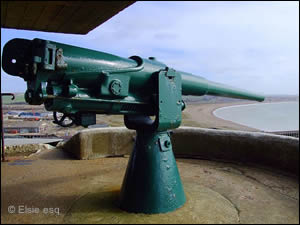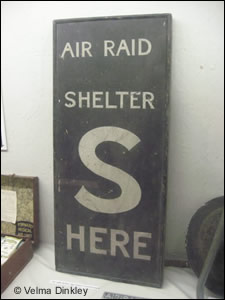Newhaven Fort sits on the chalk cliff overlooking the entrance of Newhaven Harbour, awaiting an invasion which never came. It was designed and built under the supervision of a Lieutenant John Charles Ardagh, on the site of a Bronze Age and later a Roman Fort, known as ‘Castle Hill’.

Guns had been placed on the hill in times of threat of attack, such as from the Spanish Armada, but were soon neglected in peacetime. A permanent gun position was built in 1759, but even throughout the Napoleonic Wars the only action it saw was against smugglers.
As the port of Newhaven grew and the railways arrived, the town’s defences needed to be re-examined and the Lunette Battery was built down on the foreshore. However when the harbour arm was built, it blocked the firing line of the guns, so it was left redundant. The remains of the battery can still be seen today.
In 1860, with the perceived threat of a French attack, the British Prime Minster, Lord Palmerston, ordered a huge plan of defence involving the construction of 72 forts, including the one at Newhaven. Instead, Napoleon III invaded Prussia and the invasion never came, so the forts became known as ‘Palmerston’s Follies’.
Lieutenant Ardagh’s fort was one of innovative design – it was built into the cliff and was the first to use concrete. It was manned by the Royal Garrison Artillery and, shortly after the turn of the century, saw improvements to the guns, as well as to the living conditions of the men.

During World War One, when it was manned by territorials, the fort guarded the harbour which saw an array of war time activity, from the supplies being shipped out to the troops, to the boats returning full of injured soldiers.
After 20 years of peace and the threat of another invasion, this time from the Nazis, the fort was again at the forefront of the nation’s defences. Newhaven was a target for enemy bombers, and by 1941 new guns were positioned to defend against these attacks. Again, the port saw plenty of military activity – troops left the town for the ill-fated Dieppe Raid in 1942 and for D-Day in 1944.
With the advent of the Cold War and threat of atomic attack, the government abandoned coastal defences in 1956. The fort’s guns were sold for scrap and the site was sold to the local council in 1962. A developer took it on for conversion into a holiday camp, but the project was soon abandoned and the site became derelict and a victim of vandalism.
After it was declared an ancient monument, it was turned into a leisure complex, although this too was unsuccessful. Lewes District Council took it on in 1988 and restored it to the visitor attraction it is today.
We took our children to Newhaven Fort in August, as my son had been learning about World War Two at school and I thought he would find it interesting. He wasn’t disappointed.
The conflict is well-represented, with a wide range of memorabilia from ration books and gas marks, to guns and uniforms. The visitor can also have the experience of being in a shelter during a bombing raid, with the vibration of an exploding bomb being felt as if you were really there.
There is also an area devoted to World War One, which includes a mock up trench and a tribute to the war poets. There are other exhibits devoted to Lieutenant Ardagh and how he designed and built the fort, as well as the Royal Garrison Artillery who manned it.
Velma Dinkley
© Velma Dinkley 2010